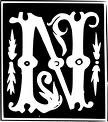"A mind went forth to form worlds: now order reigns where chaos once held sway."
I have a lot of thoughts on object boundaries that have accumulated on various bits of paper over the last week and a half. I should probably take a stab at forging them into something cohesive, lest they continue to plague me. :)
(By the way, when I say 'thoughts', I generally mean 'questions', so this may not appear to be accomplishing much, other than clearing my desk.)
Many of the topics covered at the conference triggered for me at least some association to the idea of object classification and object boundaries. (And, naturally, that which you are thinking about becomes a filter for all incoming information, so in the end this may prove to have been a vicious cycle of thoughts that leads nowhere.) Mysticism, per se, was not a huge topic at the conference, though various terms and ideas associated with it were discussed - ego dissolution, non-dual awareness, all-is-one, transcendence. Various states associated with psychedelic experience were also discussed. A key feature in most of these states is a radical alteration of how object boundaries are perceived. 'I am the plant/animal/universe.' Which leads me to wonder...
What are object boundaries? A purely cognitive construct with no corresponding counterpart in the neurological or neurochemical make-up of the brain? Doubtful. Where then are object boundaries located? What changes are triggered when I see a moth sitting on the tree bark, as opposed to just tree bark? The visual input has not changed. Higher order information must come into play, but how is it integrated with the visual input to form a unified experience of two objects where before only one was perceived?
Why do I bother to mention these things? Because it occurred to me at some point that the nature of the representation of object boundaries within the neural, neurochemical, or electrophysical architecture of the brain might allow for a degree of fluidity not unlike that seen in field dynamics. (No, I haven't mastered field dynamics. Don't get excited.) Object boundaries attached to a given field of input can fluctuate to accommodate or define different portions of the input. The limiting aspect in the shifting of object boundaries appears to be the speed at which attention can shift... In fact, are there reasons to believe that there is a dissociation between a change in perceived object boundaries and a change in attention? (No, I haven't mastered the attention literature. Or the object classification literature. Don't get excited.)
Is there a predictable manner in which perceived object boundaries can shift? A series of steps that cannot be circumvented, and which therefore might be a clue as to the dynamics of object perception and the physical correlates of object classification? Do these dynamics resemble field dynamics?
It also occurred to me at some other point to wonder what the relationship was between our perception of time, and our perception of changing object boundaries and/or changing relationships between object boundaries (motion)? Can these be dissociated in a meaningful way?
Alright, if you are still with me, rest assured that all this is not completely unrelated to hacking the smear. Our physicist friends will be the first to tell you that one cannot ignore time or gravity. And in order to violate a rule, one must understand where it comes from... ;)
Wednesday, April 16, 2008
Subscribe to:
Post Comments (Atom)


No comments:
Post a Comment